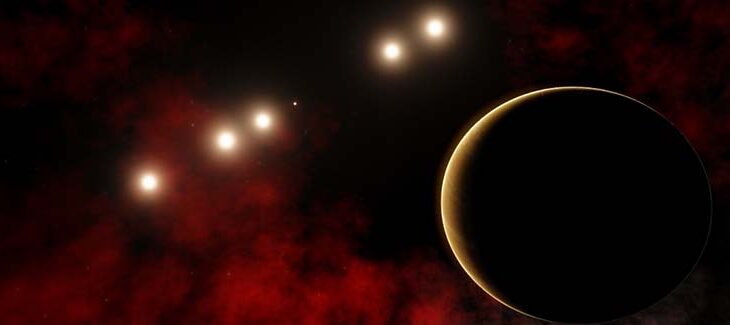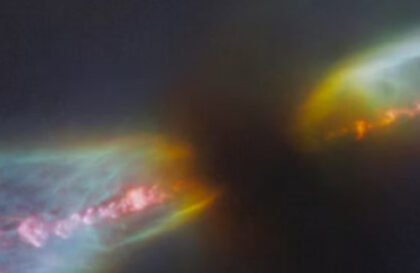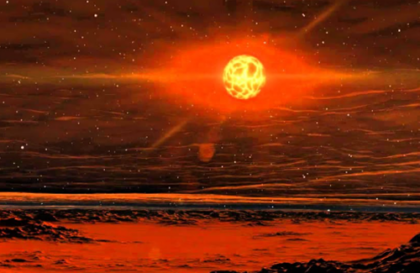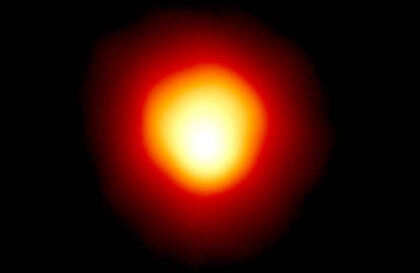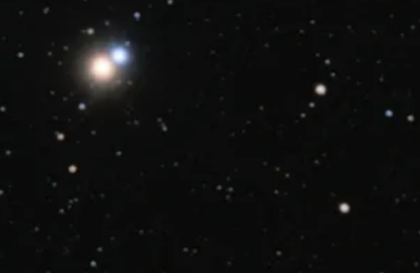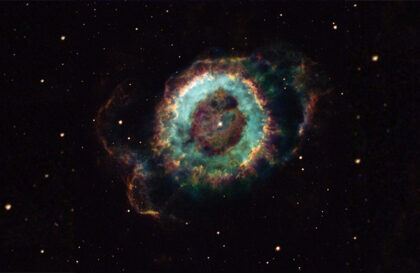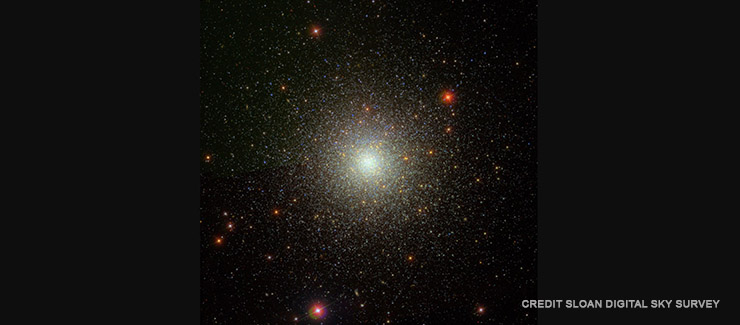Binary stars make up about half of all the stars in the galaxy. The TESS telescope has discovered a system in which three pairs of stars rotate around a common center of mass, forming an eclipsing triple binary (or is it still a sixfold?) star.
1900 light-years away in Eridanus’s constellation is a unique three star pairs TYC 7037-89-1 system. In each pair, one star is larger and brighter than the Sun, and the other is one and a half times smaller. The pairs rotate with periods of 1.3-8.2 days. Two of them revolve around a common center of mass for four years, and the third pair revolves around them in two thousand years.
This schematic shows the configuration of the sextuple star system TYC 7037-89-1. The inner quadruple is composed of two binaries, A and C, which orbit each other every four years or so. An outer binary, B, orbits the quadruple roughly every 2,000 years. All three pairs are eclipsing binaries. The orbits shown are not to scale. Credit: NASA’s Goddard Space Flight Center
Systems of two stars are connected by gravity and rotate around a common center of mass. The characteristics of stars in a binary system may vary. Typically, the brighter, more massive star is designated “A,” and the less luminous star is set “B.”
The closest binary star system to us is Alpha Centauri A and B. Although it has three components, it looks like a single star to the naked eye. All components are visible through the telescope. Examples of other double stars are Beta Lyrae, Algol, Sirius, and Antares.
This highly magnified shot shows Antares’ much smaller close companion, Antares B. Credit: astronomy.com/ Giuseppe Donatiello
Phenomena and phenomena associated with double stars
- The Algol paradox is a phenomenon in which the lower-mass component of the binary star Algol B is evolutionarily older than the more massive component Algol A. This paradox may be associated with the flow of mass in close binary systems, which accelerates the evolution of the less massive star.
- In binary star systems, the components can exchange masses. Every star has a Roche lobe where its gravity dominates. Matter can flow between stars through the Lagrange point, where these cavities touch.
- Symbiotic binary stars are systems of a red giant and a white dwarf. They are short-lived but are characterized by nova-like flares that increase their brightness by 2-3 times. These stars have unique astrophysical characteristics, the study of which attracts astronomers.
Where do double stars come from?
Binary stars, like single stars, are formed from gas and dust clouds under the influence of gravity. There are three main theories of their formation:
- Separation of the common proto-cloud core at an early stage.
- Fragmentation of the protostellar disk can lead to binary or multiple stars.
- Dynamic processes in the proto-cloud which serve as material for stars.
Exoplanets around double stars
Exoplanets are planets outside the solar system. Of the more than 800 known, 64 orbit binary stars. Some of them orbit one star, others orbit both. Most of these exoplanets in systems with a distance between stars of 35-100 AU are located at about 20 AU from the stars.
Study of double stars
The double star hypothesis was proposed by John Mitchell in 1767, and William Herschel confirmed it with his observations in 1802. From the 19th to the 21st centuries, scientists actively studied these stars using new optics. Today, astronomers use astrometric and spectral analysis in addition to visual observations to study near and distant binary systems.
Interesting Facts
- About half of all stars in the observable Universe are binaries. There may be more of them than single stars.
- In most cases, both companions of a binary star system are the same age, but often, one companion exceeds the other in mass and stage of evolutionary development.
- A neutron star or black hole can sometimes be found in double-star systems.
- Binary stars can exchange their matter with each other.
- Astronomy enthusiasts distinguish between optically binary and physically binary star systems. The first are simply stars nearby in the night sky. The second is a true binary star system, where both companion stars revolve around a common center of mass.
TESS space telescope
Illustration of the Transiting Exoplanet Survey Satellite (TESS) in front of a lava planet orbiting its host star. Credit: GSFC / NASA
The TESS telescope, launched on April 18, 2018, on a Falcon 9 rocket, was created to continue the research of the Kepler telescope in the search for exoplanets using the transit method. Its four 16.8-megapixel cameras scan most of the celestial sphere, focusing on areas the James Webb telescope will study.
Banner image: LiveJournal / Arturo100/SpaceEngine
Image credit:
https://lozga.livejournal.com
https://universe.nasa.gov
https://www.astronomy.com
https://www.nbcnews.com
